Cannabis Clone vs Seed: Which Growing Method Produces Better THCA?
For cannabis cultivators seeking to maximize THCA production, the fundamental choice between cannabis clones vs seeds represents one of the most critical decisions in the growing process. This choice impacts everything from initial investment costs to final harvest quality, making it essential for both novice and experienced growers to understand the nuances of each propagation method.
The debate over clone vs seed THCA production has intensified as legal cannabis markets mature and cultivators demand more predictable, high-quality outcomes. While clones offer genetic consistency and proven performance, seeds provide genetic diversity and the potential for discovering exceptional phenotypes. Understanding how genetics impact THCA production and consistency becomes crucial when considering that THCA levels can vary significantly based on both genetic potential and cultivation methods.
Cost and time considerations also play pivotal roles in this decision. New growers often face budget constraints and steep learning curves, making the choice between immediate clone availability and the longer seed-to-harvest timeline particularly important. Additionally, legal and practical availability factors vary dramatically by region, with some areas offering robust clone markets while others rely primarily on seed sources.
This comprehensive analysis examines both cannabis propagation methods through the lens of THCA production, helping cultivators make informed decisions based on their specific goals, resources, and circumstances.
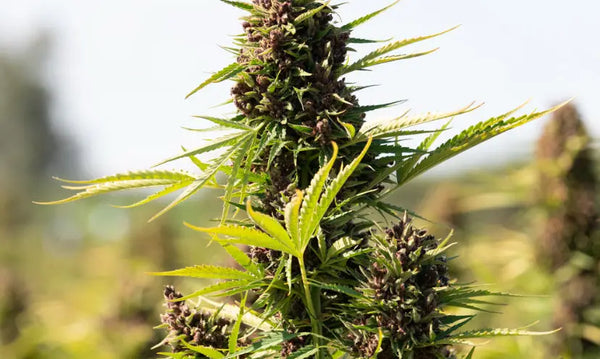
Understanding Cannabis Genetics
Phenotype vs Genotype Basics
The relationship between a plant's genetic makeup (genotype) and its observable characteristics (phenotype) forms the foundation for understanding how different propagation methods affect THCA production. While genotype represents the complete genetic potential encoded in a plant's DNA, phenotype reflects how those genes are actually expressed under specific environmental conditions.
Genetic Potential vs Environmental Expression
Cannabis genetics determine the maximum possible THCA production levels, but environmental factors significantly influence whether plants reach this potential. Temperature, light intensity, nutrient availability, and stress levels all impact gene expression, meaning two genetically identical plants can produce different THCA levels under varying conditions.
This interplay becomes particularly relevant when comparing clones and seeds. Clones carry identical genetic blueprints, but their final THCA content depends heavily on cultivation conditions. Seeds from the same parent plants may have similar genetic potential but express different combinations of traits, leading to varying THCA production levels even under identical growing conditions.
THCA Production Variability Factors
Several key factors influence THCA variability in cannabis plants. Cannabinoid synthase enzymes, responsible for converting precursor compounds into THCA, are controlled by multiple genes that can be expressed differently across phenotypes. Environmental stressors during the flowering period particularly impact these enzymatic pathways, with controlled stress sometimes enhancing THCA production while excessive stress reduces it.
Light spectrum and intensity during flowering significantly affect THCA synthesis, with specific wavelengths triggering increased cannabinoid production. Temperature fluctuations, especially cooler nighttime temperatures during late flowering, can enhance THCA accumulation. Nutrient availability, particularly phosphorus and potassium during flowering, directly impacts the plant's ability to produce and accumulate cannabinoids.
Stability in Clones vs Seed Variation
Clones offer remarkable stability in THCA production because they represent genetically identical copies of proven mother plants. Once a high-THCA phenotype is identified and maintained as a mother plant, every clone cutting will carry the same genetic potential for cannabinoid production. This stability extends beyond just THCA levels to include flowering time, yield characteristics, and overall plant structure.
Seeds, conversely, introduce genetic variation that can be both advantageous and challenging. Even seeds from stable breeding programs show phenotypic variation, with THCA levels potentially ranging from below-average to exceptional within a single seed lot. This variation requires more extensive testing and selection but offers opportunities to discover superior phenotypes that exceed the performance of available clones.
How THCA Traits Are Inherited
Dominant and Recessive Cannabinoid Genes
THCA production in cannabis follows complex inheritance patterns involving multiple genes working in concert. The primary cannabinoid synthase genes (THCAS) show varying dominance patterns, with some alleles (gene variants) producing higher enzyme activity than others. When breeding plants with different THCA production capabilities, offspring may exhibit intermediate levels or, in some cases, exceed parental performance through favorable gene combinations.
Recent genetic research has identified specific gene markers associated with high THCA production, allowing breeders to make more informed selections. However, the multifactorial nature of cannabinoid synthesis means that simple Mendelian inheritance patterns don't always apply, making seed outcome prediction challenging even with genetic testing.
Environmental Influence on Expression
Epigenetic factors significantly impact how THCA-related genes are expressed, meaning environmental conditions during plant development can influence cannabinoid production patterns that persist throughout the plant's life cycle. Stress during vegetative growth, light exposure patterns, and even the mother plant's environment can affect how genes are expressed in subsequent generations.
This environmental influence explains why identical clones may show slight variations in THCA production across different growing seasons or facilities. It also suggests that proper environmental management becomes crucial regardless of the chosen propagation method.
Breeding Program Impacts
Professional breeding programs focus on stabilizing high-THCA traits through selective breeding over multiple generations. F1 hybrid seeds often exhibit hybrid vigor, potentially producing higher THCA levels than either parent, but subsequent generations (F2, F3) may show increased variation as genetic traits segregate.
Stabilized seed lines, developed through extensive backcrossing and selection, offer more predictable THCA production than F1 hybrids but may lack the peak performance potential of exceptional individual phenotypes maintained as clones.
Consistency Factors
Clone Uniformity Advantages
The genetic uniformity of clones provides unmatched consistency in THCA production, assuming proper cultivation practices. Commercial cultivators particularly value this predictability for planning harvests, estimating yields, and maintaining product consistency across multiple cultivation cycles.
Clone uniformity extends beyond cannabinoid content to include growth patterns, flowering time, and response to training techniques. This predictability allows cultivators to optimize their methods for specific clone genetics, potentially maximizing THCA production through tailored environmental controls.
Seed Variation Benefits and Challenges
While seed variation presents challenges for commercial operations requiring consistency, it offers unique advantages for small-scale cultivators and breeding programs. The genetic diversity within seed populations provides opportunities to discover exceptional phenotypes that may surpass available clone genetics in THCA production or other desirable traits.
However, this variation requires more extensive testing and selection processes. Cultivators must be prepared to evaluate multiple plants, potentially keeping several as mother plants while discarding others that don't meet THCA production standards.
Hybrid Vigor in F1 Seeds
F1 hybrid seeds often exhibit heterosis or hybrid vigor, potentially producing more vigorous plants with enhanced THCA production compared to their parents. This phenomenon occurs when beneficial alleles from different parent lines combine, creating offspring that exceed parental performance in various traits.
However, hybrid vigor typically diminishes in subsequent generations, making F1 seeds valuable for direct cultivation but less suitable for breeding programs seeking stable, long-term genetics.
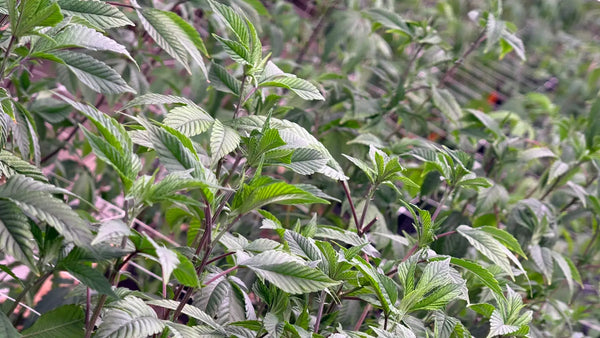
Cannabis Clones: Advantages and Considerations
THCA Production Advantages
Identical Genetics Guarantee
THCA clones offer the most significant advantage in cannabinoid production predictability. When selecting clones from proven high-THCA mother plants, cultivators can expect nearly identical cannabinoid profiles across their entire crop. This genetic uniformity eliminates the variability inherent in seed-grown plants, making harvest planning and product standardization significantly more manageable.
Laboratory testing data from clone-grown crops typically shows remarkably consistent THCA levels, often varying by less than 1-2% between plants when grown under identical conditions. This consistency proves invaluable for commercial operations where product standardization directly impacts market value and regulatory compliance.
Proven Phenotype Selection
Clone sources typically maintain mother plants that have already been extensively tested and selected for superior THCA production. This pre-selection process means cultivators can access genetics that have already demonstrated exceptional performance, eliminating the need for extensive phenotype hunting and testing that seed cultivation requires.
Elite clone-only strains often represent the pinnacle of breeding achievements, with some legendary cultivars available exclusively through clonal propagation. These genetics may have been selected from thousands of seed-grown plants, representing the absolute best performers from extensive breeding programs.
Consistent Potency and Yield
Beyond THCA levels, clones provide predictable yields and consistent flowering characteristics. Cultivators can accurately estimate harvest weights, plan cultivation cycles, and optimize their growing environments for specific clone genetics. This predictability extends to terpene profiles, plant structure, and response to training techniques.
The consistency in flowering time proves particularly valuable for commercial operations running perpetual harvests. When every plant finishes flowering within the same narrow window, harvest logistics become much more manageable, and facility utilization remains optimal.
Known Flowering Times and Characteristics
Clone genetics come with established cultivation data, including optimal flowering times, nutrient requirements, and environmental preferences. This information allows cultivators to fine-tune their growing conditions for maximum THCA production from day one, rather than learning through trial and error over multiple growing cycles.
Practical Benefits
No Germination Uncertainty
Clone cultivation eliminates germination variables that can plague seed starting. While seed germination rates may vary from 60-95% depending on age, storage conditions, and genetic factors, healthy clones offer nearly 100% success rates when properly managed. This reliability proves crucial for commercial operations where every plant represents significant investment in time, space, and resources.
Faster Start to Vegetative Growth
Rooted clones can begin vigorous vegetative growth immediately after transplanting, while seeds require germination time plus initial development phases. This time advantage can reduce total cultivation cycles by 1-3 weeks, allowing for additional harvests per year in commercial operations.
The established root system in quality clones also provides immediate nutrient uptake capabilities, supporting faster early growth rates compared to seedlings developing their initial root structure.
Sex Determination Certainty
Feminized clones eliminate the risk of male plants, ensuring that all cultivation space and resources contribute to harvestable flower production. With regular seeds producing approximately 50% male plants, clones offer significant space efficiency advantages, particularly in plant-count-limited cultivation scenarios.
Immediate Availability of Mature Genetics
Clone sources often maintain extensive libraries of proven genetics, allowing cultivators to access diverse strain options without the long-term commitment required for seed-based breeding programs. This accessibility enables rapid adaptation to market demands or cultivation goal changes.
Sourcing Quality Clones
Licensed Dispensary Clone Programs
Legal cannabis markets typically feature regulated clone sources through licensed dispensaries and cultivation facilities. These sources must meet strict quality standards and often provide detailed genetic information, testing data, and cultivation recommendations. Regulated clone sources also offer legal compliance assurance, crucial for licensed cultivators operating within state frameworks.
Clone-Only Strain Availability
Many legendary cannabis strains exist only in clone form, having never been bred to stable seed lines. These elite genetics often represent unique phenotypes discovered through extensive selection processes, offering access to exceptional THCA production capabilities unavailable through seed sources.
Elite Genetics Access
Professional clone sources often maintain relationships with elite breeders and cultivation facilities, providing access to cutting-edge genetics before they become widely available. This early access can provide competitive advantages in rapidly evolving cannabis markets.
Regional Strain Selections
Local clone sources typically focus on genetics adapted to regional growing conditions, climate patterns, and market preferences. These regionally selected strains often perform better in local environments than genetics developed in different climatic zones.
Clone Health Considerations
Pest and Disease Transmission Risks
Clone propagation can transmit various pests and diseases from mother plants to entire crops. Spider mites, aphids, thrips, and fungal pathogens can spread rapidly through clone populations, making source selection and quarantine protocols crucial for successful clone cultivation.
Professional clone sources implement integrated pest management programs and regular testing protocols to minimize these risks, but cultivators must remain vigilant about incoming clone health assessment.
Quarantine Protocols
Established quarantine procedures prove essential when introducing new clones to existing cultivation facilities. Recommended quarantine periods of 7-14 days allow for pest and disease detection before integrating clones with established plants. During quarantine, careful monitoring for signs of stress, pest activity, or disease symptoms helps prevent facility-wide contamination.
Root Development Assessment
Quality clones feature well-developed, white root systems free from root rot or other pathological conditions. Brown, mushy, or sparse root systems indicate poor clone health and reduced chances of successful transplantation. Proper assessment of root development helps ensure clone viability and successful establishment.
Genetic Drift Over Generations
Extended clonal propagation can lead to genetic drift and accumulated stress factors that may impact THCA production over time. While properly maintained mother plants can provide viable clones for years, periodic replacement with fresh genetics helps maintain optimal performance levels.
Some cultivators implement rotation schedules for mother plants, replacing them every 12-24 months with fresh genetics to prevent potential genetic degradation.
Cost Analysis
Initial Purchase Costs
Clone pricing typically ranges from $15-50 per cutting, depending on strain rarity, source reputation, and regional market factors. While this represents higher upfront costs compared to seeds, the elimination of germination uncertainty and male plant waste often provides overall value advantages.
Premium clone-only genetics may command higher prices, but their proven performance characteristics often justify the investment through superior THCA production and overall yield quality.
Setup and Care Requirements
Clone cultivation requires specific environmental controls during the establishment period, including humidity domes, gentle lighting, and careful watering protocols. While these requirements add to initial setup costs, they're typically less extensive than comprehensive seed starting systems.
Long-term Propagation Potential
Successful clone establishment enables long-term genetic preservation through mother plant maintenance. A single purchased clone can potentially provide genetics for years of cultivation through proper mother plant management, making the initial investment highly cost-effective over time.
Legal Considerations
State-by-State Clone Regulations
Cannabis clone regulations vary significantly between legal jurisdictions, with some states requiring specific licensing for clone sales while others allow more flexible retail arrangements. Cultivators must understand local regulations governing clone purchases, transport, and possession to ensure compliance.
Plant Count Implications
Clone counting toward cultivation limits varies by jurisdiction, with some states counting rooted clones as mature plants while others distinguish between different growth stages. Understanding these distinctions proves crucial for legal compliance in plant-count-limited cultivation scenarios.
Transport and Possession Laws
Interstate clone transport remains federally prohibited, limiting clone sources to local markets. Even within legal states, transport regulations may require specific packaging, labeling, and documentation to ensure legal compliance during transit.

Cannabis Seeds: Benefits and Challenges
Genetic Diversity Advantages
Phenotype Hunting Opportunities
Seed cultivation offers unparalleled opportunities for discovering exceptional phenotypes that may exceed the performance of available clone genetics. Within any seed population, genetic recombination creates unique combinations of traits that can produce plants with superior THCA production, novel terpene profiles, or improved cultivation characteristics.
Professional cultivators often dedicate significant resources to phenotype hunting, growing dozens or hundreds of plants from seed to identify the exceptional few worthy of long-term cultivation. This process, while resource-intensive, can yield genetics that provide competitive advantages and superior THCA production for years to come.
Hybrid Vigor Potential
F1 hybrid seeds frequently exhibit hybrid vigor or heterosis, producing plants that exceed either parent's performance in various characteristics including THCA production, yield, disease resistance, and overall plant vigor. This phenomenon occurs when beneficial traits from different genetic lineages combine, creating offspring that surpass parental capabilities.
However, hybrid vigor typically diminishes in subsequent seed generations, making F1 seeds particularly valuable for direct cultivation rather than further breeding efforts.
Adaptation to Local Conditions
Seeds allow for selection of phenotypes particularly well-adapted to specific environmental conditions, climate patterns, or cultivation methods. Over multiple generations of local cultivation and selection, seed-grown populations can develop characteristics that optimize performance in specific growing environments.
This adaptation potential proves particularly valuable for outdoor cultivators in diverse climatic zones or indoor growers with specific environmental constraints.
Breeding Program Foundation
Seeds provide the genetic foundation necessary for developing custom breeding programs and creating novel genetic combinations. Cultivators interested in developing their own unique genetics require seed stock to begin selective breeding efforts focused on maximizing THCA production or other desired characteristics.
THCA Variation in Seed Populations
Expected Variation Ranges
Seed populations typically show significant THCA variation, even within stable breeding lines. Well-bred feminized seeds might show THCA ranges of 3-8% in unstable populations, while carefully selected breeding lines may narrow this range to 15-25% total THC potential. Understanding these variation ranges helps set appropriate expectations and planning requirements for seed cultivation projects.
F2 and subsequent generation seeds often show wider variation ranges as genetic traits segregate, requiring more extensive selection efforts to identify high-THCA performers.
Selecting High-THCA Phenotypes
Effective selection for high-THCA phenotypes requires systematic evaluation protocols including laboratory testing, visual assessment, and performance tracking. Successful selection programs often evaluate 10-20 plants to identify 1-2 exceptional performers worthy of long-term cultivation.
Selection criteria should include not only peak THCA levels but also consistency across multiple harvest cycles, overall yield characteristics, and cultivation ease factors.
Testing and Evaluation Protocols
Professional THCA evaluation requires laboratory testing at multiple stages of plant development, including pre-harvest trichome sampling and post-harvest flower analysis. Visual indicators such as trichome density, resin production, and aromatic intensity can provide preliminary selection guidance, but laboratory confirmation remains essential for accurate THCA assessment.
Keeping Mother Plants from Seeds
Once exceptional high-THCA phenotypes are identified from seed populations, maintaining them as mother plants enables long-term genetic preservation and clone production. This process essentially converts the benefits of seed genetic diversity into the consistency advantages of clonal propagation.
Seed Types and Sources
Regular Seeds (Male/Female Mix)
Regular seeds produce approximately 50% male and 50% female plants, requiring sex identification and male plant removal during early flowering. While this reduces effective plant counts, regular seeds often exhibit greater genetic stability and may show superior vigor compared to feminized alternatives.
For breeding programs, regular seeds provide access to both male and female genetics necessary for developing custom genetic lines and conducting selective breeding efforts.
Feminized Seed Reliability
Feminized seeds eliminate male plants through various breeding techniques, ensuring that virtually all plants produce harvestable flowers. Modern feminization techniques produce highly reliable results, with male occurrence rates typically below 1-2% in quality feminized seed lots.
However, some cultivators report reduced vigor or stability in feminized seeds compared to regular seed alternatives, though this remains a subject of ongoing debate within the cultivation community.
Autoflower Considerations
Autoflowering seeds offer unique advantages for THCA production including rapid life cycles, compact plant sizes, and photoperiod independence. However, autoflower genetics typically produce lower absolute THCA levels compared to photoperiod varieties, though recent breeding advances have significantly improved autoflower potency.
The rapid life cycle of autoflowers allows for multiple harvests per year, potentially offsetting lower per-plant THCA production through increased harvest frequency.
Reputable Seed Bank Selection
Quality seed sources provide crucial information including genetic lineage, expected characteristics, and cultivation recommendations. Reputable seed banks often maintain extensive testing data and customer feedback that helps guide strain selection for specific THCA production goals.
Established seed banks typically offer germination guarantees and genetic authenticity assurances that provide confidence in seed investment decisions.
Growth Characteristics
Tap Root Development Advantages
Seed-grown plants develop strong taproot systems that can provide superior drought tolerance, nutrient uptake efficiency, and overall plant stability compared to clone-grown plants with fibrous root systems. This root development advantage can translate to improved plant vigor and potentially enhanced THCA production under stress conditions.
Vigorous Growth from Germination
Healthy seeds often produce more vigorous initial growth compared to clones, particularly once established root systems begin supporting rapid vegetative development. This vigor can result in larger plant sizes and higher overall yields, potentially offsetting any THCA concentration differences between genetic options.
Environmental Adaptation
Seed-grown plants typically show superior adaptation to environmental variations and stress conditions compared to clones. This adaptation capability can prove valuable in challenging growing environments where clone genetics might struggle to perform optimally.
Stress Tolerance Variations
Different phenotypes within seed populations often show varying stress tolerance levels, allowing cultivators to select genetics particularly well-suited to their specific environmental conditions or cultivation challenges.
Cost Considerations
Seed Prices
Cannabis seed prices typically range from $5-20 per seed, depending on genetic rarity, breeder reputation, and seed type. While individual seed costs may seem lower than clones, the need to grow multiple plants for selection and the potential for male plant waste can increase overall costs.
Premium genetics from renowned breeders may command higher prices but often provide superior genetic potential and more predictable characteristics.
Germination Success Rates
Seed germination rates vary based on seed age, storage conditions, and genetic factors, typically ranging from 70-95% for quality fresh seeds. Older seeds or those subjected to poor storage conditions may show significantly reduced germination rates, impacting overall project costs and timelines.
Male Plant Wastage in Regulars
Regular seeds require approximately twice the initial plant count to achieve desired female plant numbers, effectively doubling space, time, and resource requirements during early cultivation phases. This factor must be considered when calculating total project costs and facility planning requirements.
Long-term Value for Breeding
While seed cultivation requires higher initial investments in terms of plant numbers and selection efforts, successful phenotype identification can provide genetic value for years through mother plant maintenance and breeding program development.
THCA Production Comparison
Potency Consistency
Clone Uniformity vs Seed Variation
Laboratory testing data consistently demonstrates that clone populations show remarkably uniform THCA levels, typically varying by less than 2% between plants grown under identical conditions. This consistency enables precise product standardization and reliable harvest planning that proves invaluable for commercial operations.
Seed populations, conversely, show significantly wider THCA variation ranges. Even within carefully bred seed lines, THCA levels may vary by 5-10% or more between individual plants. While this variation presents challenges for standardization, it also offers opportunities to identify exceptional high-THCA phenotypes that exceed clone genetic potential.
Testing Results Comparison
Comparative studies between clone and seed cultivation methods reveal distinct patterns in THCA production. Clone populations typically cluster around established THCA levels with minimal deviation, while seed populations show bell curve distributions with most plants performing near average levels and fewer individuals showing exceptional or poor performance.
Professional cultivation facilities often report that their highest-performing plants come from exceptional seed-selected phenotypes, while their most consistent production comes from proven clone genetics.
Environmental Impact on Both Methods
Environmental factors affect both clones and seeds, but the impacts manifest differently. Clone populations tend to respond uniformly to environmental changes, making it easier to optimize growing conditions for maximum THCA production across entire crops.
Seed-grown plants may show varying responses to environmental factors, with some phenotypes performing better under specific conditions while others excel in different environments. This diversity can provide cultivation advantages in variable environmental conditions but complicates optimization efforts.
Yield Considerations
Clone Yield Predictability
Clone cultivation offers exceptional yield predictability, allowing cultivators to accurately forecast harvest weights based on historical performance data. This predictability proves crucial for commercial operations planning product availability, processing schedules, and market commitments.
Established clone genetics typically have well-documented yield characteristics under various cultivation methods, training techniques, and environmental conditions, enabling cultivators to optimize their approaches for maximum production.
Seed Plant Vigor Advantages
Seed-grown plants often exhibit superior vigor, particularly during vegetative growth phases, potentially resulting in larger plant sizes and higher overall yields. The robust taproot development in seed plants can support more extensive above-ground growth compared to clone plants with fibrous root systems.
However, this vigor advantage varies significantly between individual phenotypes, with some seeds producing exceptionally vigorous plants while others may underperform compared to established clone genetics.
Training Response Differences
Different genetic sources often respond differently to training techniques such as topping, LST (low-stress training), and SCROG (screen of green) methods. Clone genetics typically have established protocols for optimal training approaches, while seed populations may require experimentation to determine the most effective techniques for each phenotype.
Some seed phenotypes may respond exceptionally well to specific training methods, potentially yielding more than clone genetics under optimal management.
Harvest Timing Consistency
Clone populations finish flowering within narrow time windows, typically varying by only a few days across entire crops. This consistency simplifies harvest logistics and facility planning while enabling optimal trichome development timing for maximum THCA content.
Seed populations may show wider variation in flowering times, requiring more complex harvest scheduling but potentially allowing for extended harvest windows that accommodate varying labor availability.
Quality Factors
Terpene Profile Consistency
Clone genetics provide consistent terpene profiles that enable standardized product development and reliable sensory characteristics. This consistency proves valuable for brand development and customer loyalty in commercial markets where product consistency directly impacts consumer satisfaction.
Seed populations may produce varying terpene profiles, offering opportunities to discover unique aromatic and flavor combinations but complicating product standardization efforts.
Cannabinoid Ratios
Beyond total THCA content, the ratios between different cannabinoids (THCA, CBDA, CBGA, etc.) remain highly consistent in clone populations. These ratios can significantly impact the entourage effect and overall product characteristics, making clone consistency valuable for specialized product development.
Seed phenotypes may exhibit varying cannabinoid ratios, potentially offering opportunities to develop products with unique cannabinoid profiles but requiring extensive testing to characterize each phenotype's chemical composition.
Bag Appeal and Structure
Clone genetics typically produce consistent flower structure, color, and visual appeal that facilitate marketing and product presentation. This consistency helps establish brand recognition and consumer expectations in competitive markets.
Seed populations may produce varying flower characteristics, with some phenotypes potentially offering superior bag appeal while others may focus on potency or yield characteristics at the expense of visual presentation.
Shelf Stability Differences
The consistency in chemical composition and physical structure provided by clone genetics often translates to predictable shelf stability and storage characteristics. This predictability proves valuable for inventory management and product distribution planning.
Different seed phenotypes may show varying shelf stability characteristics, requiring individual assessment and potentially customized storage protocols for optimal long-term product quality maintenance.
Long-term Production Planning
Mother Plant Maintenance
Successful clone operations require ongoing mother plant maintenance, including regular pruning, feeding schedules, pest management, and periodic genetic refresh protocols. While this represents ongoing operational requirements, it enables consistent genetic access for years of production cycles.
Effective mother plant management can provide hundreds of clones from single genetic sources, making initial seed investment and selection efforts highly cost-effective over time.
Genetic Preservation Methods
Both clone and seed genetics require preservation strategies to maintain long-term access to superior performers. Clone preservation involves mother plant maintenance and backup propagation protocols, while seed preservation may include controlled pollination and seed production efforts.
Cryogenic preservation techniques offer long-term storage options for both genetic types, enabling genetic banking for future cultivation needs while minimizing ongoing maintenance requirements.
Strain Rotation Strategies
Commercial operations often benefit from strain rotation strategies that balance genetic consistency with market demand diversity. Clone genetics enable rapid rotation between proven performers, while seed cultivation provides opportunities to introduce novel genetics and adapt to evolving market preferences.
Successful rotation strategies often combine both approaches, maintaining core clone genetics for consistent production while incorporating seed-based phenotype hunting for genetic innovation and market differentiation.
Practical Growing Considerations
Setup Requirements
Clone Propagation Equipment
Clone cultivation requires specific equipment for successful establishment including humidity domes, rooting hormone, appropriate growing media, and gentle lighting systems. Proper environmental control during the rooting phase proves crucial for clone success, requiring consistent temperature (72-78°F), high humidity (80-90%), and gentle airflow.
Established clone operations often benefit from dedicated propagation areas with environmental controls optimized for cutting establishment rather than full plant growth.
Seed Starting Necessities
Seed germination requires different equipment including germination chambers, heating mats, pH-adjusted water, and appropriate starting media. While initial setup costs may be lower than clone systems, successful seed starting requires careful attention to moisture levels, temperature control, and timely transplanting.
Advanced seed starting systems may include automated watering systems, environmental monitoring, and germination tracking capabilities that improve success rates and reduce labor requirements.
Space and Timing Considerations
Clone operations can integrate propagation areas with existing growing facilities, requiring minimal additional space for rooting and establishment phases. The predictable timeline for clone establishment (7-14 days) enables precise scheduling and facility utilization planning.
Seed cultivation may require dedicated space for germination, early development, and sex identification phases. The longer timeline from seed to harvest (additional 2-4 weeks) requires adjusted facility planning and potentially increased infrastructure to maintain consistent production schedules.
Skill Level Requirements
Clone Care and Rooting
Successful clone management requires understanding of cutting selection, rooting hormone application, environmental control, and transplanting timing. While these skills are readily learned, improper technique can result in low success rates and genetic loss.
Experienced clone cultivators develop intuitive understanding of cutting health assessment, optimal harvesting timing from mother plants, and environmental adjustment protocols that maximize rooting success rates.
Seed Germination Techniques
Seed starting involves understanding germination requirements, moisture management, temperature control, and seedling care protocols. Different seed types may require specific treatment protocols including scarification, stratification, or soaking procedures.
Advanced seed techniques such as paper towel germination, direct sowing methods, and hydroponic germination each offer specific advantages depending on cultivation goals and infrastructure capabilities.
Problem Recognition and Solutions
Both methods require ability to recognize and address common problems including pest issues, disease symptoms, environmental stress, and nutritional deficiencies. Clone operations must additionally monitor for genetic drift and mother plant health issues.
Seed cultivation requires skills in sex identification, phenotype assessment, and selection criteria development that enable effective genetic evaluation and breeding decisions.
Timeline Differences
Clone to Harvest Timeline
Established clones can begin vegetative growth immediately after successful rooting, typically requiring 7-14 days for establishment followed by standard vegetative and flowering periods. This timeline advantage can reduce total cultivation cycles by 2-4 weeks compared to seed starting.
The predictable clone establishment timeline enables precise scheduling for perpetual harvest systems and facility capacity optimization.
Seed to Harvest Duration
Seed cultivation requires additional time for germination (3-7 days), early development (1-2 weeks), and potential sex identification periods. While this extends total cultivation time, vigorous seed growth during vegetative phases may partially offset the initial time investment.
Autoflowering seeds offer accelerated timelines with total seed-to-harvest periods as short as 8-10 weeks, potentially enabling more harvest cycles per year despite longer initial development periods.
Seasonal Planning Implications
Clone cultivation enables flexible seasonal planning with consistent genetic availability throughout the year. Mother plant maintenance ensures continuous clone production regardless of external seasonal factors.
Seed cultivation may benefit from seasonal timing considerations, particularly for outdoor cultivation where specific planting windows optimize environmental conditions for germination and early development.
Risk Management
Backup Plan Importance
Both cultivation methods benefit from redundancy planning to mitigate potential crop failures. Clone operations should maintain multiple mother plants of critical genetics, while seed operations benefit from diverse genetic portfolios and proven backup strains.
Comprehensive backup strategies often combine both methods, maintaining clone genetics for reliable production while developing seed-based genetic alternatives for long-term sustainability.
Genetic Preservation Strategies
Effective genetic preservation requires systematic approaches to maintaining valuable genetics through various preservation methods. Clone preservation involves mother plant maintenance, backup propagation, and potentially cryogenic storage protocols.
Seed preservation may include controlled breeding efforts, proper storage conditions, and periodic viability testing to ensure long-term genetic access.
Crop Failure Mitigation
Diversified genetic portfolios help mitigate risks associated with specific genetic vulnerabilities, environmental stresses, or pest pressures. Clone operations benefit from maintaining multiple proven genetics, while seed operations provide natural genetic diversity for risk distribution.
Best Practices for Each Method
Maximizing Clone Success
Proper Rooting Techniques
Successful clone rooting begins with selecting healthy cutting material from vigorous mother plants. Cuttings should be 4-6 inches long with multiple nodes and healthy foliage, taken during vegetative growth periods when hormone levels optimize rooting potential.
Proper cutting preparation includes clean, angled cuts below nodes, removal of lower leaves, and immediate treatment with rooting hormone. Environmental control during rooting proves crucial, maintaining 75-80°F temperatures, 80-90% humidity, and gentle air circulation to prevent stagnation while avoiding cutting stress.
Environmental Control During Establishment
Newly rooted clones require gradual acclimatization to standard growing conditions. Humidity levels should be gradually reduced from 80-90% during rooting to 60-70% over 7-10 days, while light intensity increases incrementally to prevent shock.
Temperature stability during establishment proves particularly important, with fluctuations potentially causing stress that delays development or reduces survival rates.
Gradual Transition Protocols
Successful clone establishment requires systematic transition protocols that gradually expose plants to standard growing conditions. This process includes progressive humidity reduction, light intensity increases, and gradual introduction to standard feeding schedules.
Monitoring for stress symptoms during transition enables early intervention and adjustment of environmental parameters to ensure successful establishment.
Optimizing Seed Cultivation
Germination Environment Setup
Optimal seed germination requires precise environmental control including consistent temperatures (75-85°F), appropriate moisture levels (moist but not waterlogged), and proper oxygenation. Different germination methods including paper towel, direct sowing, and hydroponic techniques each offer specific advantages depending on seed types and cultivation goals.
pH management proves crucial during germination, with optimal ranges typically between 6.0-7.0 for most cannabis genetics. Water quality should be considered, with chlorinated water often requiring treatment or aging before use.
Early Selection Criteria
Effective early selection begins during germination with assessment of germination vigor, root development speed, and initial growth characteristics. Vigorous germinators often indicate genetic quality and stress tolerance that correlate with superior adult plant performance.
Cotyledon development, initial leaf formation, and early growth rates provide preliminary selection indicators before more resource-intensive cultivation phases.
Record Keeping for Phenotype Tracking
Systematic record keeping enables effective phenotype evaluation and selection decision-making. Detailed records should include germination data, growth characteristics, flowering traits, yield information, and laboratory testing results.
Digital tracking systems can facilitate data analysis and comparison between different genetic sources, growing methods, and environmental conditions.
Hybrid Approaches
Starting with Clones, Keeping Mothers
Many successful cultivation operations begin with proven clone genetics to ensure immediate production capability while simultaneously developing mother plant programs for long-term genetic preservation and propagation cost reduction.
This approach provides immediate consistency benefits while building infrastructure and expertise for sustainable genetic management.
Seed Hunting with Clone Backup
Phenotype hunting programs often maintain proven clone genetics as production backups while dedicating resources to seed evaluation and selection. This strategy enables genetic innovation while maintaining reliable production capabilities.
Successful seed hunting typically requires significant resource allocation including space, time, and testing budgets that may take multiple growing cycles to provide returns on investment.
Seasonal Method Rotation
Some operations benefit from seasonal rotation between cultivation methods, using seed starting during optimal germination seasons while relying on clone production during other periods. This approach can optimize resource utilization while providing genetic diversity benefits.
Legal and Regulatory Considerations
Plant Count Regulations
How Clones vs Seeds Count Toward Limits
Legal cannabis cultivation limits vary significantly between jurisdictions in how they count different plant types toward allowable totals. Some regions count any rooted plant regardless of size toward mature plant limits, while others distinguish between seedlings, vegetative plants, and flowering plants.
Understanding specific regulatory definitions proves crucial for legal compliance, as violations can result in significant penalties including license revocation and criminal charges.
Vegetative vs Flowering Plant Distinctions
Many jurisdictions maintain separate counting categories for vegetative and flowering plants, with different limits for each category. These distinctions can significantly impact cultivation planning and facility design, particularly for operations utilizing mother plants and perpetual harvest systems.
Mother Plant Regulations
Mother plant maintenance may fall under specific regulatory categories with unique counting requirements, space limitations, or record-keeping obligations. Some jurisdictions limit mother plant numbers while others regulate them as part of overall vegetative plant counts.
Interstate Transport Issues
Cannabis clone and seed transport across state lines remains federally prohibited regardless of state-level legalization status. This restriction limits genetic access to sources within individual state markets, potentially constraining genetic diversity and breeding opportunities.
Some jurisdictions allow limited interstate cooperation for specific research or medical purposes, but these programs typically require extensive regulatory approval and compliance protocols.
Commercial Cultivation Considerations
Commercial cultivation operations face additional regulatory requirements including seed-to-sale tracking, laboratory testing mandates, and facility security protocols. These requirements may favor certain cultivation methods or genetic sources that integrate more easily with regulatory compliance systems.
Professional cultivation licenses often include specific requirements for genetic sourcing, testing protocols, and quality assurance programs that may influence choices between clone and seed cultivation methods.
Conclusion
The choice between cannabis clones vs seeds for optimal THCA production depends on multiple factors including cultivation goals, resource availability, market requirements, and regulatory constraints. Neither method provides universal superiority, as each offers distinct advantages that align with different cultivation strategies and objectives.
Method Selection Decision Framework
Clones excel in scenarios requiring consistency, predictability, and immediate genetic access. Commercial operations prioritizing standardization, rapid production scaling, and reliable harvest planning typically benefit most from clone-based cultivation systems. The genetic uniformity of THCA clones enables precise quality control and product standardization that proves invaluable in competitive commercial markets.
Seeds provide optimal solutions for cultivators seeking genetic diversity, breeding opportunities, and potential access to superior phenotypes. Small-scale operations, breeding programs, and cultivators in regions with limited clone access often find seed cultivation more suitable for their needs. The genetic variation inherent in seed populations offers opportunities to discover exceptional performers that may exceed available clone genetics.
Combining Approaches for Optimal Results
Many successful cultivation operations implement hybrid strategies that leverage the advantages of both methods. Starting with proven clone genetics ensures immediate production capability while simultaneously conducting seed-based phenotype hunting for long-term genetic development. This approach provides production stability while maintaining innovation potential.
Establishing mother plants from exceptional seed-selected phenotypes essentially converts the genetic diversity benefits of seeds into the consistency advantages of clones, creating sustainable genetic programs that balance innovation with reliability.
Personal Goals and Resource Alignment
The optimal choice between cultivation methods ultimately depends on aligning method characteristics with specific cultivation goals and available resources. Cultivators prioritizing consistency and predictability should focus on proven clone genetics, while those seeking genetic innovation and diversity may find greater value in seed-based approaches.
Resource considerations including space, time, budget, and skill level significantly impact method suitability. Clone cultivation requires ongoing mother plant maintenance and propagation infrastructure, while seed cultivation demands selection expertise and genetic evaluation capabilities.
Understanding the complex interplay between cannabis genetics, cultivation methods, and THCA production enables informed decision-making that optimizes outcomes based on individual circumstances and objectives. Whether choosing clones for consistency or seeds for diversity, successful THCA cultivation ultimately depends on matching genetic potential with optimal growing conditions and professional cultivation practices.
The evolving cannabis industry continues to develop new genetic sources, cultivation techniques, and cannabis propagation methods that expand options for maximizing THCA production. Staying informed about these developments while maintaining focus on fundamental cultivation principles ensures continued success regardless of the chosen propagation method.
Both clones and seeds offer viable pathways to exceptional THCA production when properly implemented with appropriate techniques, environmental controls, and genetic selection. The key lies in understanding the unique characteristics of each method and selecting the approach that best aligns with specific cultivation goals, available resources, and market requirements.

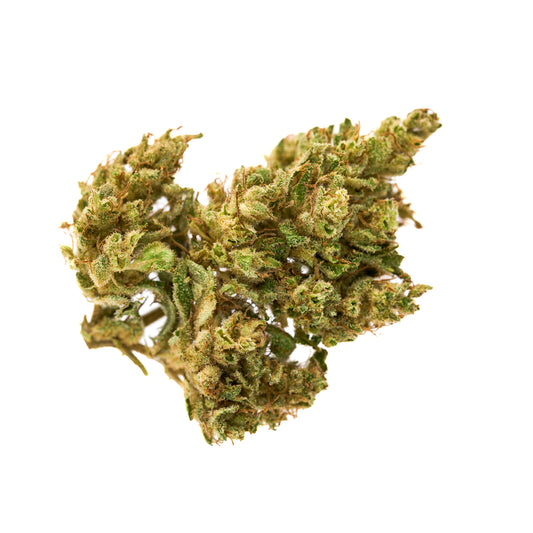
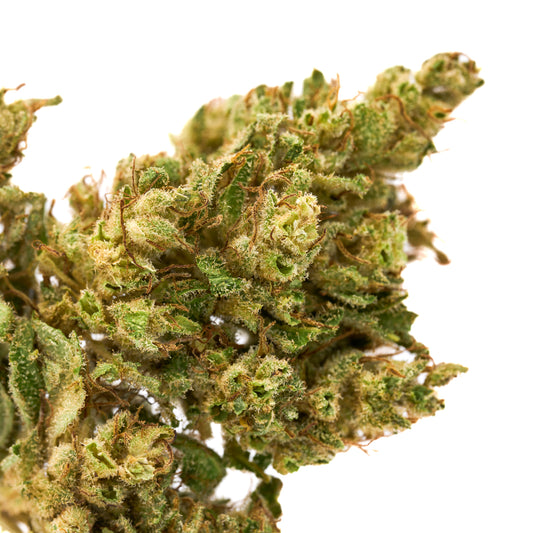
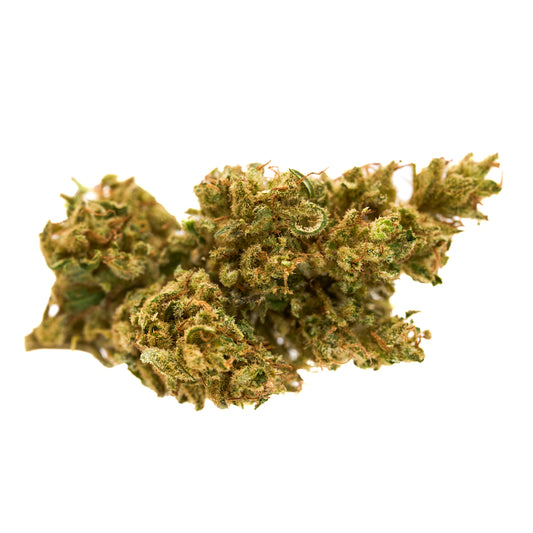
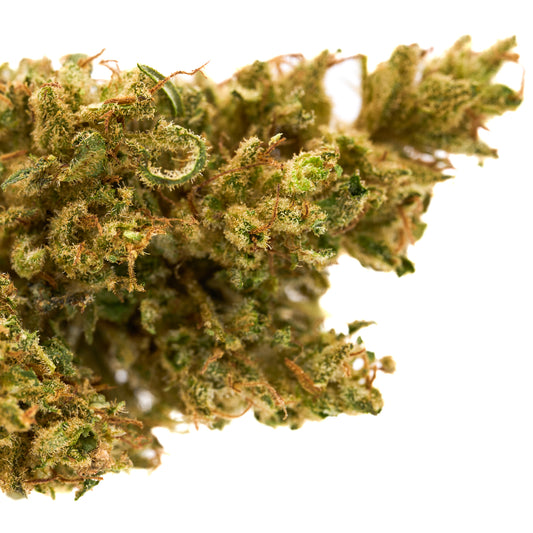
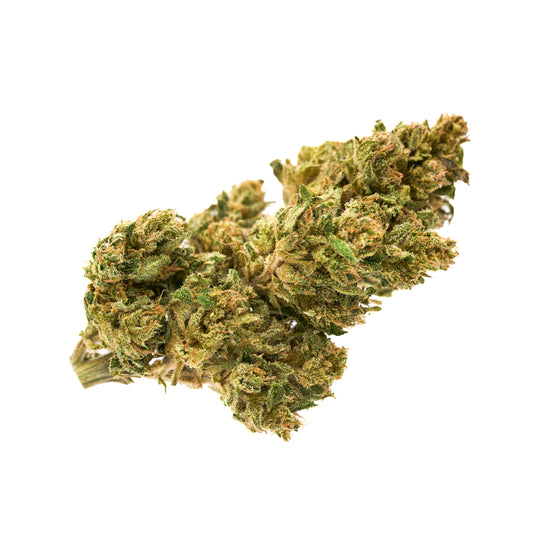
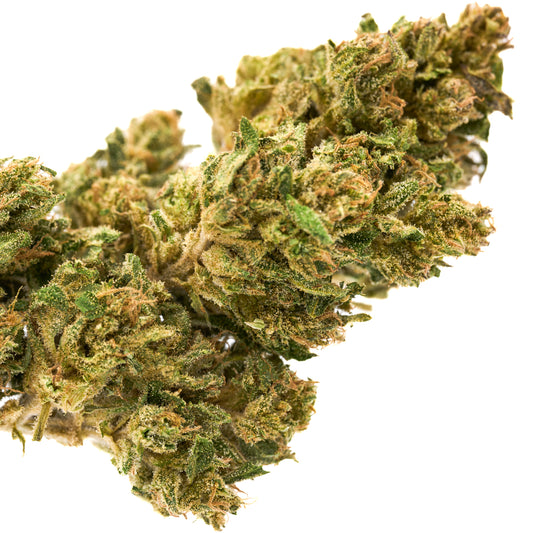



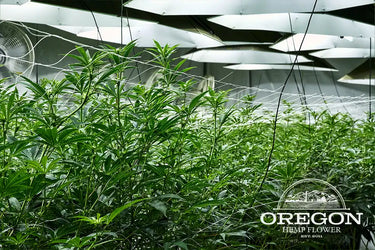

Leave a comment
Please note, comments need to be approved before they are published.